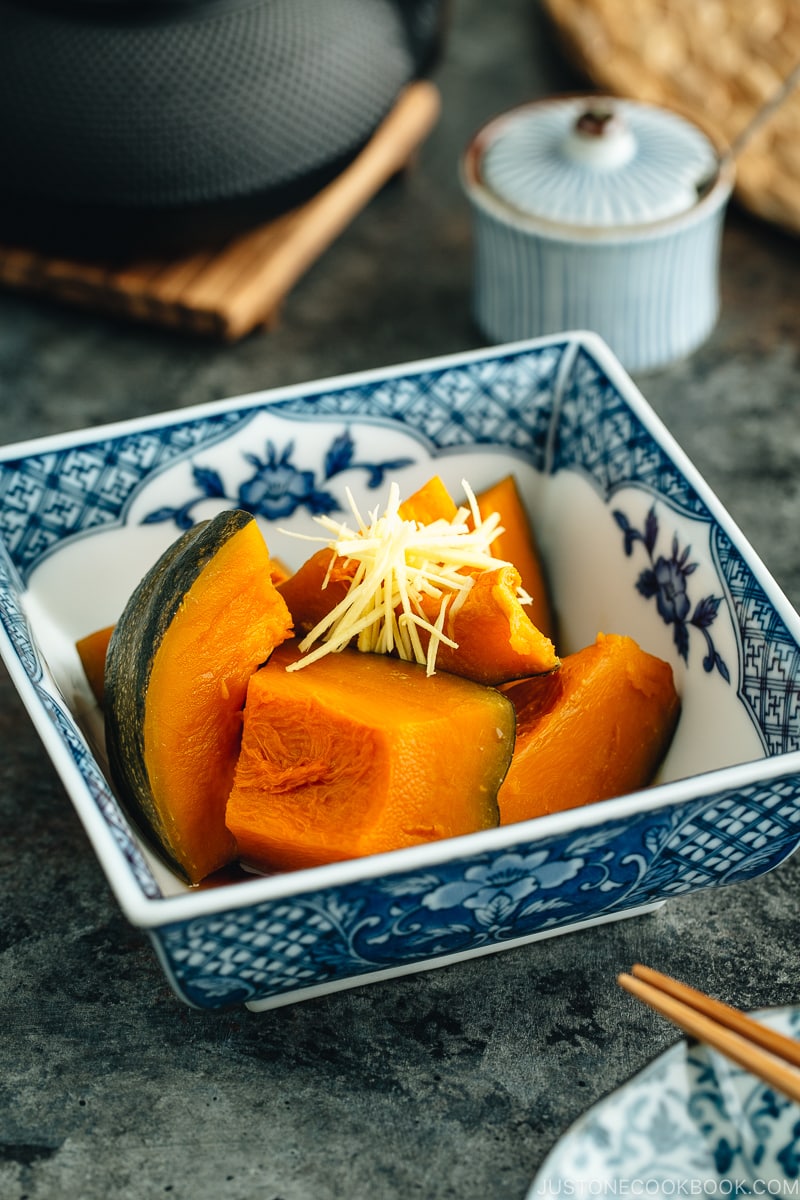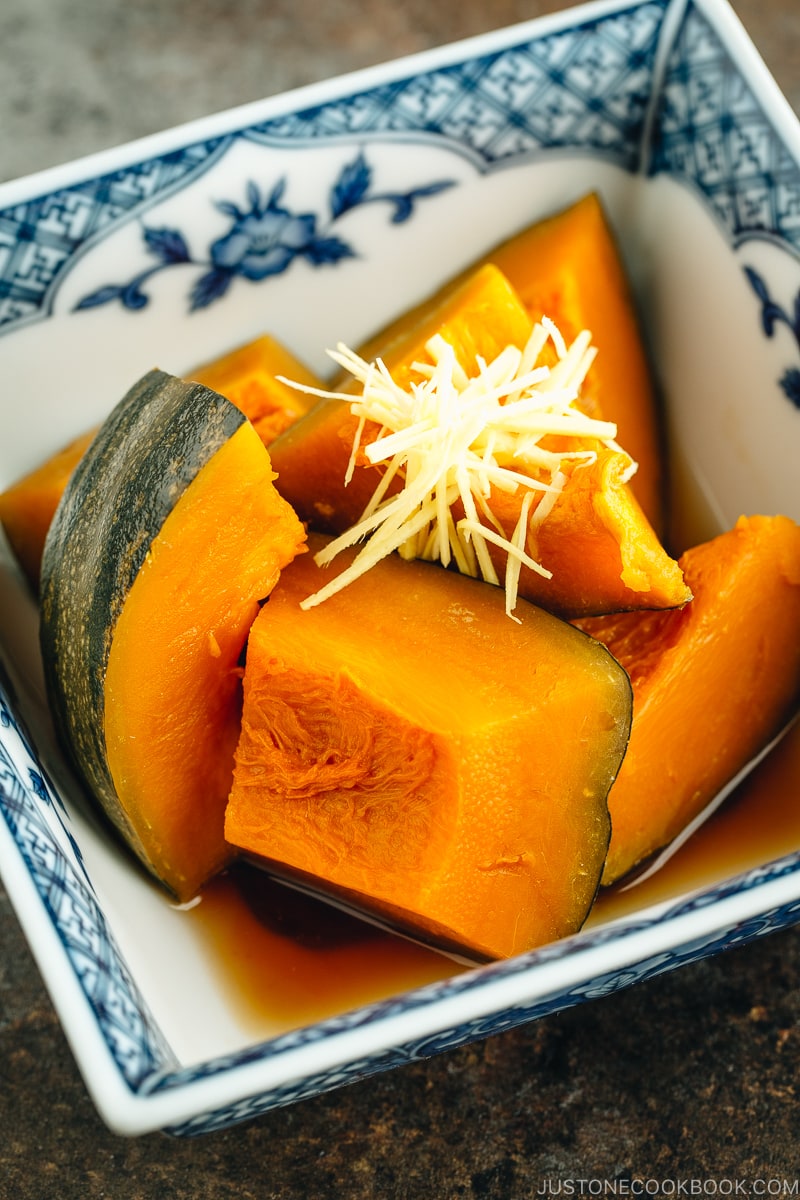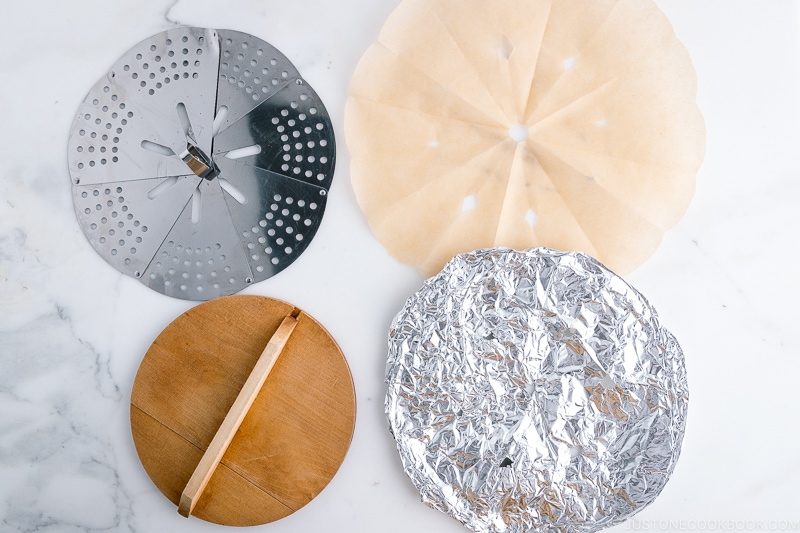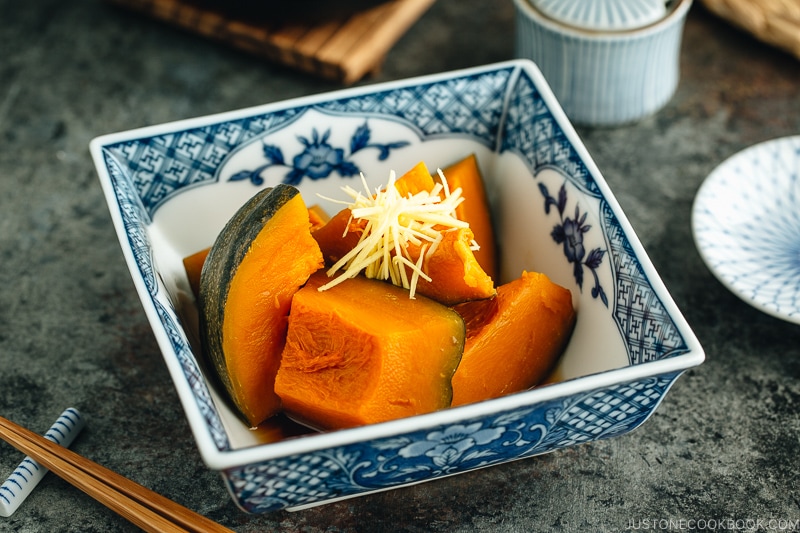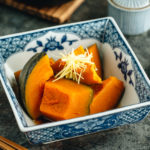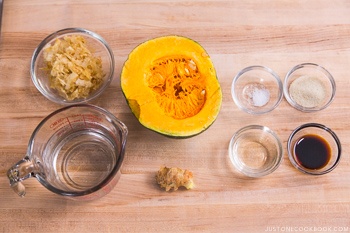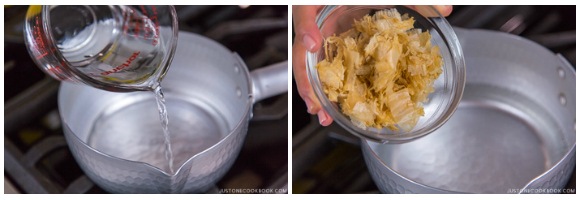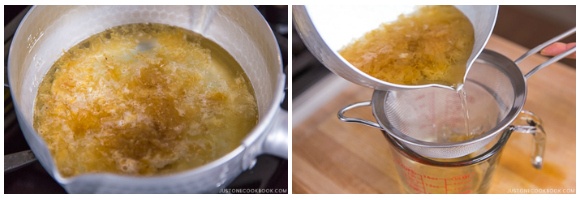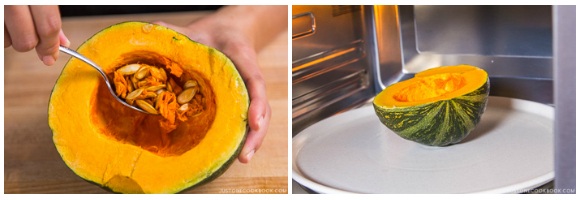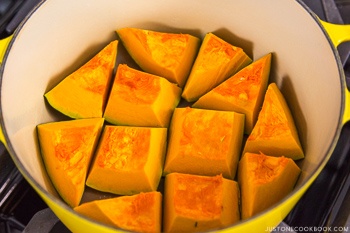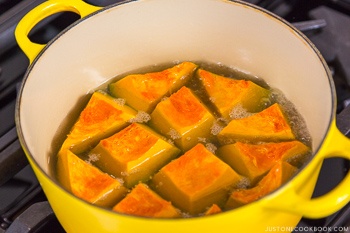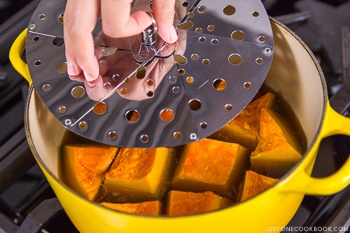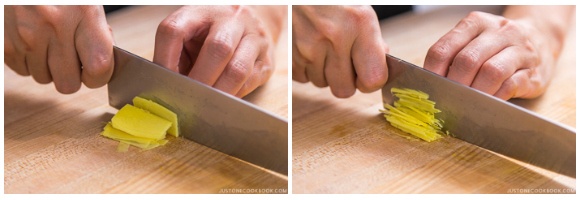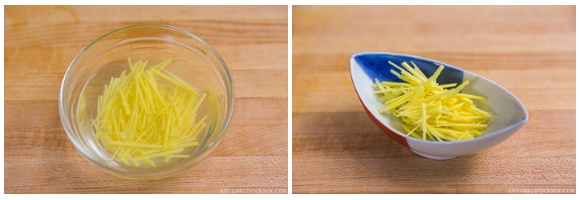Japanese Simmered Kabocha Squash, or what we call Kabocha no Nimono (かぼちゃの煮物), is one of the most classic and popular simmered dishes in Japan. If you are traveling in Japan, you will see this kabocha dish everywhere. You‘ll see it in the bento box you pick up at the train station, as part of the side dishes of your teishoku (lunch meal set), or at the breakfast buffet in your ryokan (Japanese inn). If you miss this hearty, comforting home-cooked dish, grab a kabocha squash at your local Japanese or Asian grocery store. It‘s easy to make this at home!
Japanese Simmered Dish – “Nimono”
A typical Japanese home-cooked meal includes at least one simmered dish called Nimono (煮物). It can be fish or meat or different types of root vegetables all cooked and simmered in one pot. Wholesome, nutritious, and easy to prepare, these simmered dishes are considered true home cooking in a Japanese kitchen. And they make up a fundamental part of washoku (和食). It might be surprising to you, but most of the simmered dishes are seasoned similarly – with some kind of Japanese stock, dashi (see 6 varieties here), sake, mirin, soy sauce (and sugar). What makes it different? Based on the ingredients, we modify the ratio of the seasonings. For example, kabocha squash itself is already very sweet and flavorful, so we go easy on the sweetness (mirin or sugar) and cut down on soy sauce since we don’t want the saltiness to overpower the dish. When it comes to dashi, you can use kombu dashi, the combination of kombu and katsuo dashi, or katsuo dashi, like I used today.
3 Important Cooking Tips
1. Cut kabocha into equal size
Do not underestimate this simple tip. To make sure all the squash pieces are evenly cooked, you want to cut the kabocha squash in similar sizes. Smaller cubes will help speed up the cooking time as well.
2. Place kabocha in a single layer
Kabocha is very fragile once it’s cooked and it can break into pieces or mush easily. Therefore, you need to secure each kabocha piece, making sure they are laid in a single layer without overlapping in the pot. Then swirl the pot to mix the seasonings instead of using cooking utensils.
3. Simmer kabocha squash with just enough liquid and an otoshibuta
The amount of cooking liquid should be just enough to come to the top level of kabocha pieces in the pot. Overfilling with cooking liquid will only result in soupy kabocha, which we want to avoid. Make sure to use an Otoshibuta (drop lid) so that the cooking liquid is forced to circulate, allowing the kabocha to cook evenly and quickly as they absorb the flavor. Truly simple and rustic, I hope you enjoy making this Simmered Kabocha Squash recipe, especially in fall and winter. To experience more Japanese home cooking, check out other Nimono recipes on my blog and leave a comment below and let me know the kind of simmered dishes you have in mind.
Other Kabocha Squash Recipes
10 Delicious Kabocha Squash Recipes To Make This Season Steamed Vegetables with Miso Sesame Sauce
